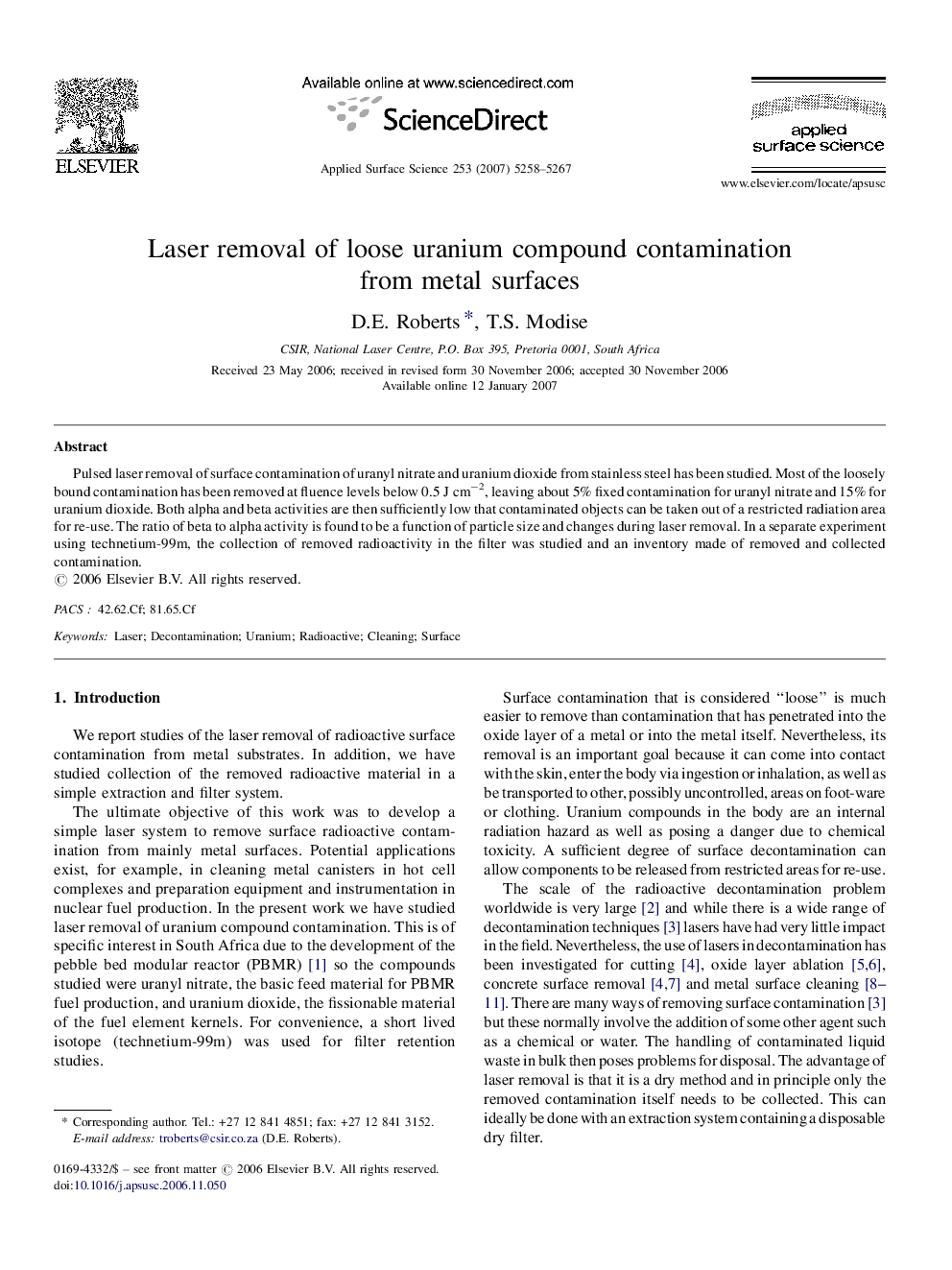| Article ID | Journal | Published Year | Pages | File Type |
|---|---|---|---|---|
| 5367101 | Applied Surface Science | 2007 | 10 Pages |
Abstract
Pulsed laser removal of surface contamination of uranyl nitrate and uranium dioxide from stainless steel has been studied. Most of the loosely bound contamination has been removed at fluence levels below 0.5Â JÂ cmâ2, leaving about 5% fixed contamination for uranyl nitrate and 15% for uranium dioxide. Both alpha and beta activities are then sufficiently low that contaminated objects can be taken out of a restricted radiation area for re-use. The ratio of beta to alpha activity is found to be a function of particle size and changes during laser removal. In a separate experiment using technetium-99m, the collection of removed radioactivity in the filter was studied and an inventory made of removed and collected contamination.
Related Topics
Physical Sciences and Engineering
Chemistry
Physical and Theoretical Chemistry
Authors
D.E. Roberts, T.S. Modise,
